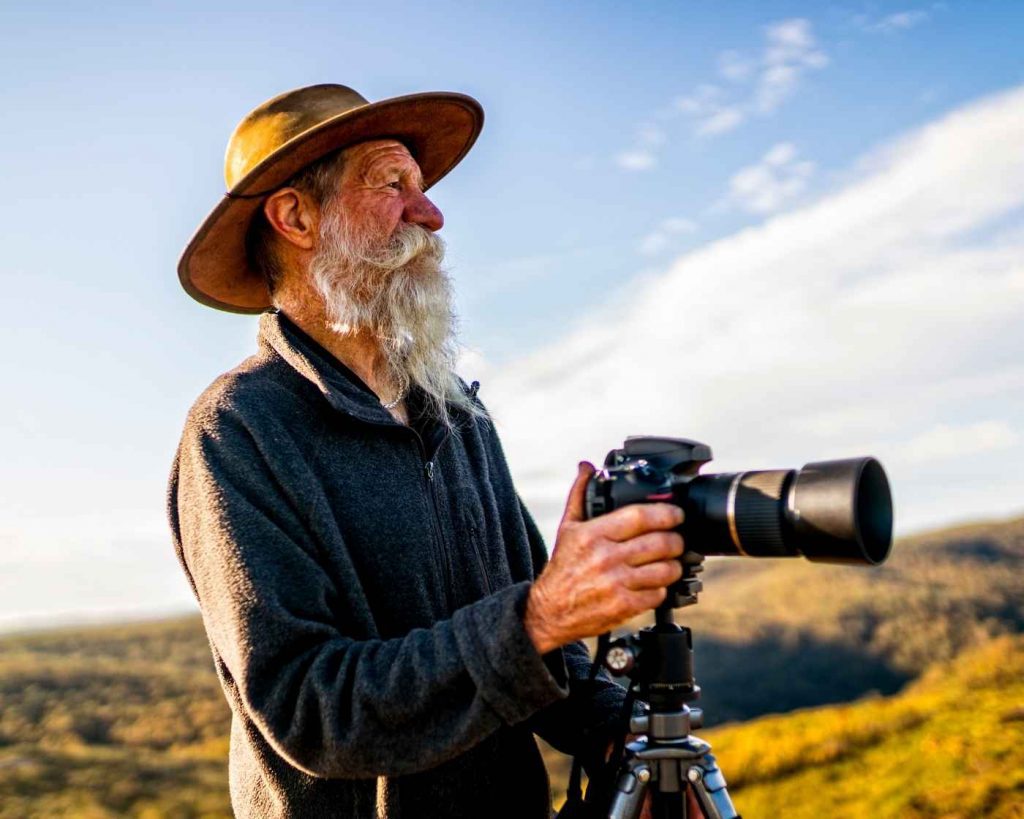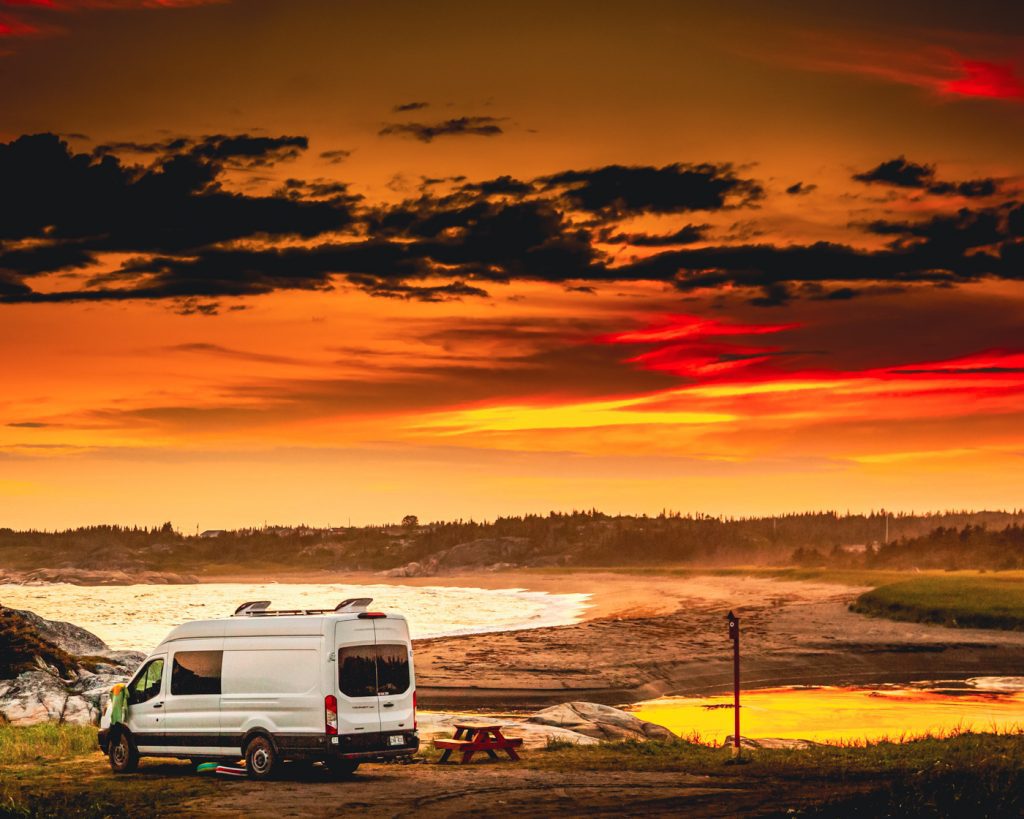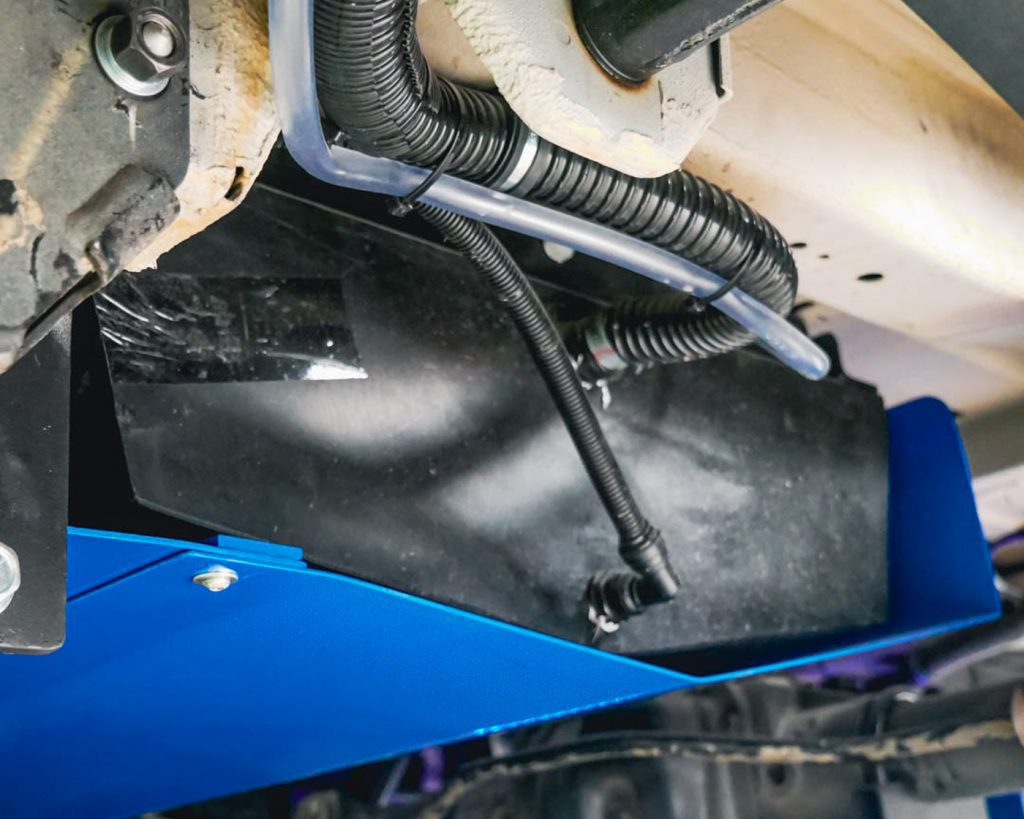Introduction
Plan a trip with a difference!
Most people own a camera, whether a smartphone, an old compact digital point-and-shoot, or a fancy DSLR that’s brought along but not used as much as it should. It’s time to plan a road trip with a difference! Grab your camera, read our article below, and start exploring Australia through your lens.
Australia is renowned for its breathtaking landscapes, from the rugged Outback to pristine beaches and lush rainforests. Road trips in this diverse country offer countless opportunities to capture stunning images that tell the story of your journey. Each destination, with its unique beauty, presents a new canvas for your photography.
Preserving memories through photography allows you to relive and share those moments with others. Whether you capture the vibrant colours of a sunset, the intricate details of wildlife, or the serene beauty of a secluded beach, each photo is a treasured keepsake of your adventures.
This article will provide advanced techniques for capturing stunning photos and show you how to make the most of your motorhome or caravan to enhance your photographic opportunities. From optimal timing and composition tips to utilising your vehicle’s mobility for scouting and planning, we’ve got you covered for a memorable and visually striking Australian road trip.
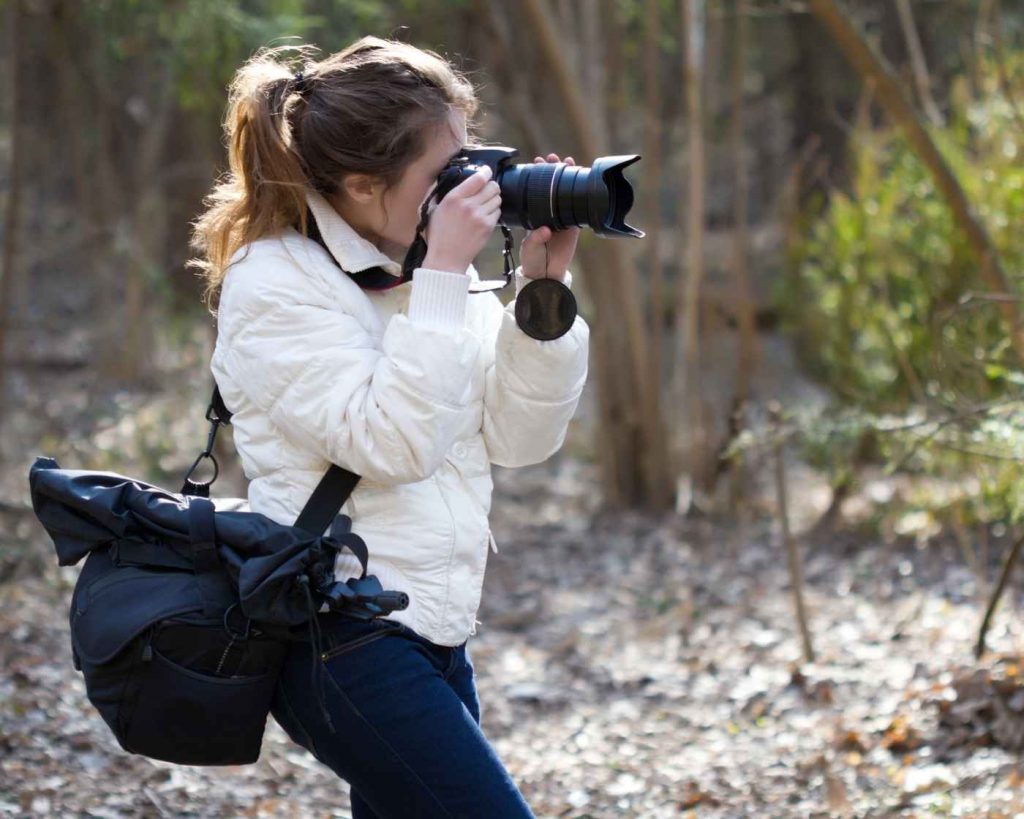
Section 1: Essential Gear for Road Trip Photography
- Camera Equipment
Photography is an accessible hobby that anyone can enjoy, thanks to the wide range of affordable and user-friendly cameras available today. Whether using a DSLR, mirrorless camera, point-and-shoot, or even just your smartphone, plenty of options suit every budget and skill level.
Recommendations for Cameras
- DSLR Cameras: Ideal for those who want full control over their settings and interchangeable lenses. Brands like Canon and Nikon offer excellent models for beginners and professionals alike.
- Mirrorless Cameras: These are lighter and more compact than DSLRs without sacrificing image quality. Sony, Fujifilm, and Olympus provide great options in this category.
- Point-and-Shoot Cameras: Perfect for casual photographers who prefer simplicity. These cameras are portable and easy to use, making them a great choice for spontaneous shots.
Importance of a Versatile Lens Kit
- Wide-Angle Lenses: Great for capturing expansive landscapes and large group shots.
- Telephoto Lenses: Essential for photographing distant subjects like wildlife or detailed architecture from afar.
- Macro Lenses: Perfect for close-up shots highlighting intricate details in nature, such as flowers and insects.
Accessories
- Tripods: Crucial for stability during low-light conditions and long exposure shots. A lightweight, portable tripod is ideal for road trips.
- Filters: Polarizing filters reduce glare and enhance colours. In contrast, ND filters allow for longer exposures in bright conditions, adding a creative touch to your photos.
- Extra Batteries and Memory Cards: Ensure you’re prepared for extended trips by carrying spares. Running out of power or storage during a scenic shoot can be frustrating.
Smartphone Photography
- Maximising Smartphone Capabilities: Modern smartphones come equipped with advanced camera features. Use gridlines to apply the rule of thirds, enable HDR mode for balanced exposures, and experiment with portrait and panorama modes.
- Recommended Apps: Enhance photos with editing apps like Adobe Lightroom Mobile and Snapseed. Planning apps like PhotoPills can help you anticipate optimal lighting conditions and plan your shots.
With the right equipment and some preparation, you’ll be ready to capture stunning images on your Australian road trip. Remember, the best camera is the one you have with you, so make the most of whatever device you bring along.
Section 2: Timing is Everything
- Timing is Everything
Australia is a treasure trove of natural beauty, offering endless opportunities for photography. Whether you aim to capture stunning portraits of your pet or travel companion, close-ups of plants and insects, or sweeping landscapes, there’s something to photograph everywhere you go.
Golden Hour and Blue Hour
- Explanation of Golden Hour and Blue Hour Lighting: Golden hour refers to the period shortly after sunrise and just before sunset when the sunlight is soft, warm, and diffused. Blue hour occurs just before sunrise and immediately after sunset, providing a cooler, bluish light that creates a serene and tranquil atmosphere.
- Benefits of Shooting During These Times: The soft, warm light of golden hour enhances colours and reduces harsh shadows, making it ideal for portraits and landscapes. Blue Hour offers a unique, ethereal quality perfect for capturing the calmness of early mornings and evenings.
Using Your Motorhome for Perfect Timing
- Arriving Early at Destinations: One of the major advantages of travelling with a motorhome is the ability to arrive at your destinations early. This allows you to capture stunning sunrise shots without the interference of crowds, providing a peaceful environment in which to work.
- Staying Late for Sunset and Night Photography: Similarly, staying late at a location ensures you can take full advantage of the sunset and even transition into night photography. The dramatic colours of the setting sun, followed by the starry night sky, offer diverse photographic opportunities.
Flexibility in Travel
- Adaptability with a Motorhome: The mobility of a motorhome provides the flexibility to change plans based on weather and lighting conditions. Suppose the forecast looks promising for a particular morning or evening. In that case, you can easily adjust your itinerary to be in the right place and time, ensuring you capture those perfect shots.
By understanding optimal timing and utilising your motorhome’s flexibility, you can make the most of Australia’s natural beauty and create stunning photographs throughout your journey.
Section 3: Composition Techniques
- Composition Techniques
Capturing stunning photographs involves more than just good lighting and timing; understanding composition techniques can significantly enhance your images. Here are some key principles to keep in mind:
Rule of Thirds
- Explanation: The rule of thirds divides your frame into nine equal parts using two horizontal and two vertical lines. You create a more balanced and engaging image by placing your subject along these lines or at their intersections.
- Examples in Landscape Photography: Instead of centring the horizon line, position it along the top or bottom third of the frame. Similarly, place key elements like a tree, building, or person at one of the intersections to add interest and draw the viewer’s eye.
Leading Lines
- Using Natural Lines: Leading lines guide the viewer’s eyes through the photograph, creating a sense of depth and directing attention to the main subject. These lines can be roads, rivers, fences, or even shadows.
- Examples: A winding road leading towards a mountain, a river flowing towards the horizon, or a path through a forest can all serve as effective leading lines that enhance the composition.
Framing
- Techniques for Framing Subjects: Use natural elements to frame your subject, adding context and drawing attention to the focal point. This can create a sense of depth and perspective.
- Examples: Trees, arches, and rocks are excellent for framing. Capturing a person standing under a canopy of trees or photographing a landmark through a rock formation can produce visually compelling images.
Foreground Interest
- Adding Depth: Including interesting elements in the foreground adds depth and dimension to your photos, making them more dynamic.
- Examples: When shooting landscapes, place rocks, flowers, or other textured objects in the foreground. This provides a sense of scale and leads the viewer’s eye from the foreground to the background, enhancing the overall composition.
This high-level composition overview is designed to make excellent photographic composition accessible to all readers. Numerous resources are available online for photographers at every skill level. If you’re eager to learn more, check YouTube for valuable tutorials, or jump in and take photos using the tips provided now! Elevate your photography and capture visually stunning images that genuinely reflect the beauty and essence of your travels.
Section 4: Exploring Remote Locations
- Scouting Locations with Your Motorhome
Using a motorhome for your photography road trip offers several unique advantages, especially when scouting and accessing remote locations. Here are some tips to make the most of your journey:
Advantages of Scouting Remote Locations Ahead of Time
- Flexibility: A motorhome allows you to explore and scout remote locations at your own pace. This flexibility means you can take the time to find the perfect spots without being rushed.
- Accessibility: Many beautiful, less-visited areas are off the beaten path and not easily accessible by regular vehicles. Your motorhome can get you closer to these hidden gems.
Tips for Finding Less-Visited Spots
- Maps and Apps: Use detailed maps and apps like WikiCamps Australia, Google Maps, and AllTrails to discover lesser-known locations. These tools often include user reviews and photos to help you identify promising spots.
- Local Knowledge: Don’t hesitate to ask locals for recommendations. They often know about secluded areas that aren’t widely advertised.
Planning Ahead
- Staying Close to Remote Locations: One of the biggest benefits of a motorhome is staying overnight near remote locations. This ensures you can be on-site during optimal shooting times like sunrise and sunset without needing long, early-morning drives.
- Researching and Planning Routes: Thoroughly researching and planning your routes can help you maximise photographic opportunities. Identify key locations you want to visit and plan your journey to ensure you’re there during the best light conditions.
As an Aussie motorhome or caravan owner, you enjoy a distinct advantage over travellers on day trips or as part of tour groups. Incorporate your motorhome into your photography adventures to capture breathtaking and unique images while avoiding the crowds and securing the perfect lighting. Your flexibility allows you to scout locations in advance, and by using your motorhome to stay close to these remote spots, you can ensure stunning captures while relishing the convenience and freedom of your mobile base.
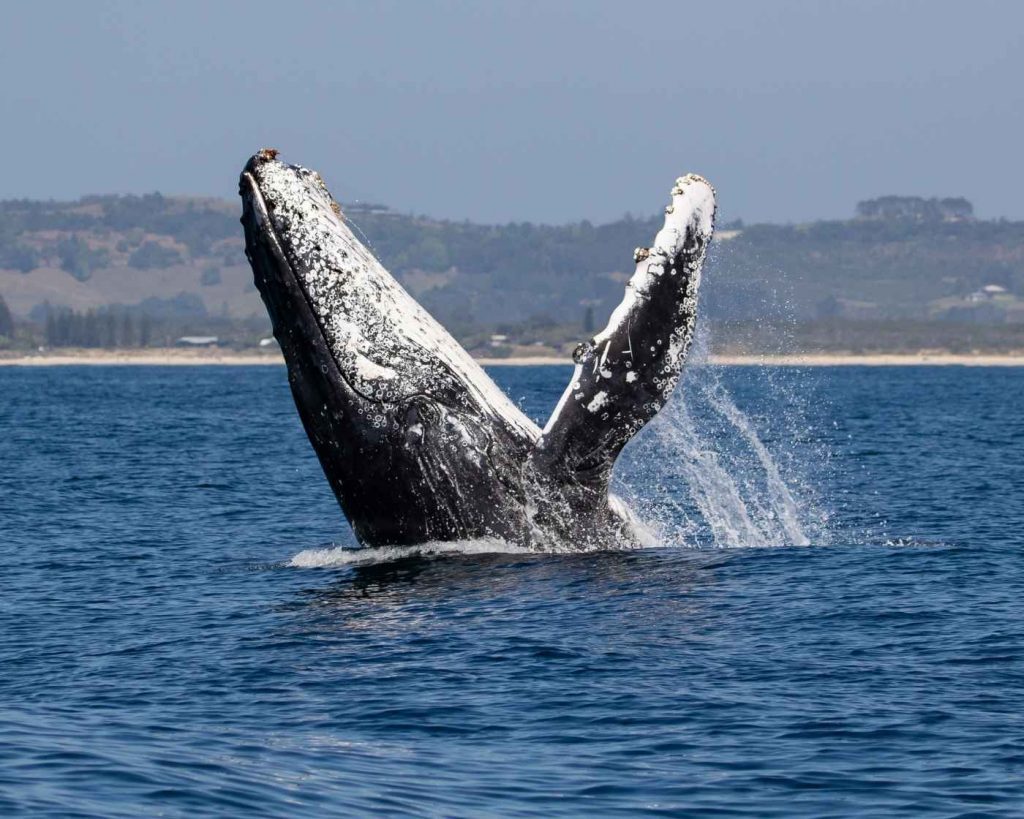
Section 5: Capturing Wildlife and Nature
- Making the Most of Your Motorhome or Caravan
Using a motorhome or caravan on your photography adventure offers numerous benefits, especially when timing and accessing wildlife-rich areas. Here’s how to maximise your experience:
Patience and Preparation
Capturing stunning wildlife photos requires patience and preparation.
- Techniques for Photographing Wildlife: Practice quiet observation and move slowly to avoid startling animals. Use camouflage and natural cover to blend into the surroundings.
- Using Telephoto Lenses: Telephoto lenses allow you to capture distant wildlife without disturbing them. They help maintain a respectful distance while still getting close-up shots.
- Ethical Wildlife Photography: Always maintain a safe distance and avoid interfering with animals’ natural behaviours. Never feed wildlife or attempt to touch them. Stay on designated paths and avoid damaging plants or disturbing nesting sites. Leave no trace to preserve the environment for future generations.
Advantages of Being in a Motorhome or Caravan
- Early Arrival and Late Departure: With a motorhome, you can arrive at locations before the crowds and stay until they leave. This allows for serene, unobstructed shots during the golden hours of dawn and dusk.
- Proximity to Wildlife: Many campsites are located near areas where wildlife is prevalent. Staying overnight lets you photograph animals during their most active times, typically early morning and late evening.
Tips for Finding Wildlife-Rich Campsites
- Research and Recommendations: Look for campsites known for their natural surroundings and abundant wildlife. Websites, forums, and apps like WikiCamps Australia can provide valuable information.
- Speak to Site Managers: When booking, talk to the site manager about securing a spot close to areas where wildlife is commonly seen. Setting up your camera outside your motorhome or caravan allows you to comfortably wait for the perfect shot.
- Visit Native Rescues and Wildlife Centres: These centres provide excellent opportunities for capturing close-up shots of animals and offer a controlled environment in which to practice wildlife photography.
Macro Photography
Macro photography opens up a fascinating world of detail, allowing you to capture the intricate beauty of insects and plants.
- Insect Photography: Focus on smaller subjects like butterflies, beetles, and spiders. Early mornings are ideal as insects are less active and easier to photograph.
- Plant Photography: Capture the delicate details of flowers, leaves, and other plant life. Look for interesting patterns, textures, and colours that stand out.
Telephoto Lenses: Close-Ups from Afar
For those who are more advanced or have invested in their photography journey, a telephoto lens is a great investment for capturing nature and wildlife. These lenses, typically 200mm to 600mm, allow you to photograph animals from afar without disturbing them, capturing fine details and isolating subjects with a pleasing background blur.
Key Benefits and Practical Tips
- Distant Capture: Photograph wildlife without intrusion.
- Detail and Isolation: Achieve detailed shots with a blurred background.
- Stability: Use a tripod or monopod to reduce camera shake. Built-in image stabilisation can also help achieve sharp images.
- Shutter Speed: To avoid motion blur, ensure your shutter speed is at least as fast as the lens’s focal length (e.g., 1/500th second for a 500mm lens).
Cost and Compatibility
- Cost: Prices vary widely, with entry-level models starting around $500 and professional-grade lenses exceeding $10,000.
- Camera Compatibility: This lens mount is available for both DSLR and mirrorless cameras. Ensure the mount matches your camera brand and model.
Ethical Wildlife Photography
Respecting wildlife and their habitats is crucial for ethical photography.
- Respecting Wildlife: Always maintain a safe distance and avoid interfering with animals’ natural behaviours. Never feed wildlife or attempt to touch them.
- Protecting Habitats: Stay on designated paths and avoid damaging plants or disturbing nesting sites. Leave no trace to preserve the environment for future generations.
Utilising these tips and fully leveraging your motorhome or caravan will enrich your photographic journey. Whether you capture the grandeur of sweeping landscapes, the delicate intricacies of macro subjects, or the elusive beauty of wildlife, your mobile base ensures you’re always in the right place at the right time.
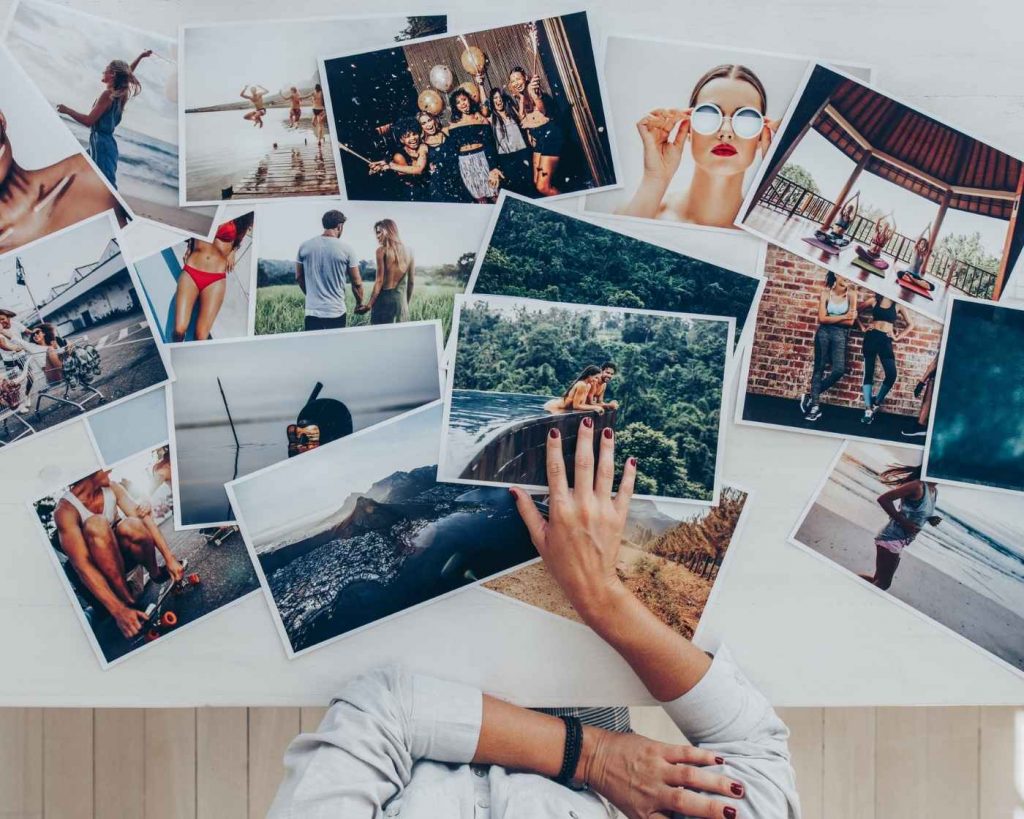
Section 6: Post-Processing Tips
Basic Editing Techniques
Adjusting Exposure, Contrast, and Saturation
Begin by making simple adjustments to correct exposure, enhance contrast, and boost saturation. Use histogram tools to ensure balanced lighting across your photos.
Advanced Editing Tools
Using Adobe Lightroom and Photoshop
- Utilise advanced features like gradient filters, spot healing, and layer adjustments for precise edits.
- Take advantage of Lightroom’s mobile app for editing on the go. The app syncs edits with your desktop software for a seamless workflow.
Maintaining a Natural Look
Subtle Enhancements
- Focus on subtlety in your edits, aiming to enhance but not over-process images.
- Avoid excessive use of filters or edits that make the photo look unnatural.
Editing on the Road
Powering Your Laptop
- Invest in a Reliable Inverter: Convert your motorhome’s 12V power supply to power your laptop.
- Portable Power Banks: Consider portable power banks designed for laptops to ensure you have backup power when needed.
Finding Power Points
- Caravan Parks and Campsites: Plan stops at locations equipped with power points. Use apps like WikiCamps Australia to find such locations.
- Public Spaces: Utilise public libraries, cafes, or visitor centres, which often provide power outlets for travellers.
Setting Up a Workspace in Your Motorhome or Caravan
- Designate a Comfortable Area: A fold-out table or removable desk can be great options for a well-lit editing space.
- Ergonomics: Ensure your workspace is ergonomically friendly to avoid strain during long editing sessions. If necessary, use a laptop stand and an external mouse or keyboard.
- Cable Management: To prevent clutter, keep your editing setup organized with cable management solutions.
Planning for Adequate Power
Solar Panels and Battery Systems
Equip your motorhome with solar panels to harness renewable energy and charge your devices. Pair these with a robust battery system for uninterrupted power supply.
Power Management
- Monitor Usage: Track your power usage and plan activities around peak sunlight hours to maximise solar charging.
- Energy-Efficient Devices: Use energy-efficient devices and LED lighting to conserve power for your editing needs.
When planning photography trips in a caravan or motorhome, there’s no need to return to a backlog of unedited photos. Instead, integrate editing into your journey by scheduling it during less favourable hours—like the day’s heat, after dark, or during inclement weather. With the right tools and workspace, you can efficiently edit your photos on the road, ensuring you produce stunning images while travelling.
Section 7: Telling a Story with Your Photos
Ideas for Documenting Your Road Trip Through a Photo Journal or Blog
Documenting your road trip through a photo journal or blog can be a fulfilling way to share your journey and preserve memories. Here are some ideas to get you started:
- Daily Highlights: Capture daily highlights and share a mix of landscapes, wildlife, and moments from your travels.
- Thematic Stories: Focus on local culture, unique wildlife, or specific activities like hiking or cooking local dishes.
- Photo Essays: Create photo essays that tell a story through images, complemented by brief captions or narratives.
- Behind the Scenes: Include behind-the-scenes shots of your setup, travel companions, and the process of capturing your photos.
Capturing Different Perspectives
To tell a complete story, it’s important to vary your angles and perspectives:
- Wide Shots: Establish context with wide shots that capture the landscape and surroundings.
- Close-Ups: Focus on details and textures for a more intimate perspective.
- High and Low Angles: Experiment with high and low angles to add depth and interest to your images.
- Panoramas: Use panoramic shots to encompass expansive scenes and breathtaking views.
Including People and Activities
Adding context to your photos by including people and activities enriches your storytelling:
- Candid Moments: Capture candid shots of people interacting with nature, engaging in activities, or simply enjoying the scenery.
- Portraits: Include portraits of locals and fellow travellers to highlight the human element of your journey.
- Action Shots: Show activities in progress, such as hiking, setting up camp, or cooking, to provide a dynamic view of your trip.
- Interaction with Wildlife: Photograph respectful and ethical interactions with wildlife, emphasising the connection between people and nature.
Take a moment to slow down and savour the journey while travelling in a caravan or motorhome. Embrace the art of people-watching, remain observant, and document your experiences. Capture the essence of your adventure or that of your travel companion, and don’t hesitate to photograph the meaningful moments of others. If you plan to commercialise images featuring other individuals, obtaining their permission is crucial. Customisable consent forms and numerous resources offering guidance are available online to simplify this process.
Considering the story your photos can tell can add richness and depth to your images. Allowing you to create a more engaging narrative of your road trip that resonates with people and preserves your cherished memories for years to come.
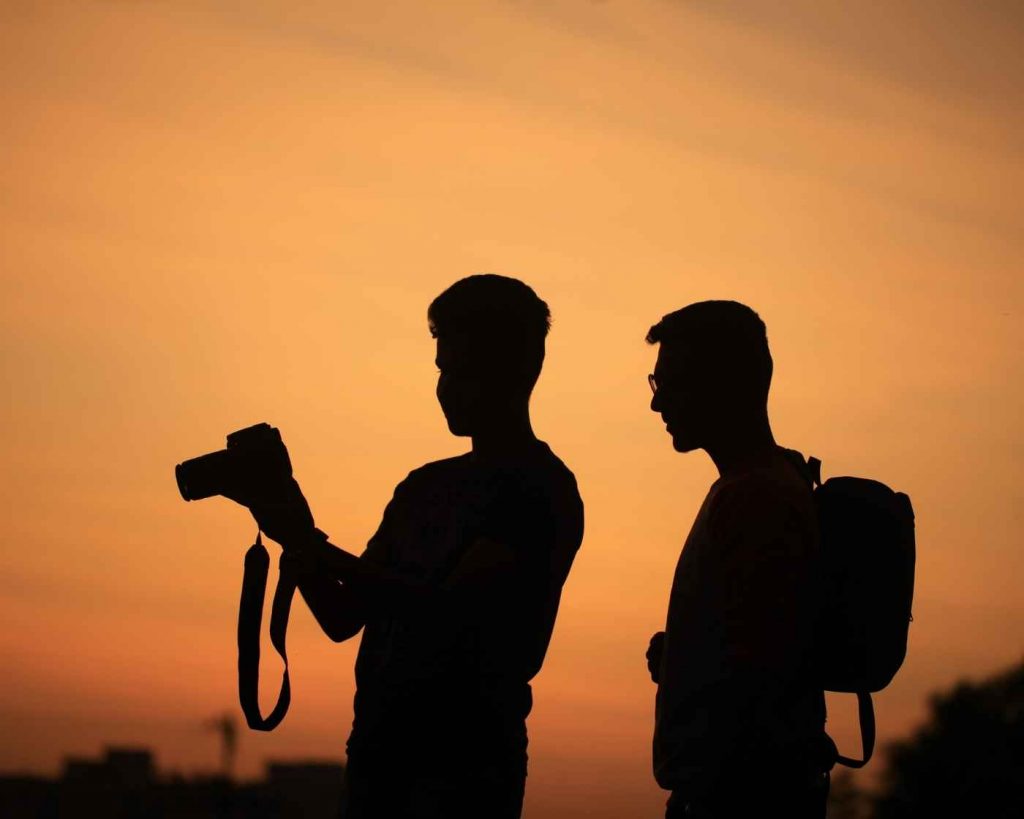
Section 8: Sharing Your Work
Social Media Platforms
Tips for Sharing on Instagram, Facebook, and Pinterest
- Hashtags: Use relevant hashtags (#AustraliaTravel, #RoadTripPhotography) to reach a wider audience.
- Engagement: Engage with travel and photography communities by commenting on and sharing others’ work.
- Albums and Stories: Create albums or stories to document your journey.
- Groups: Join travel and photography groups to share your photos and receive feedback.
- Themed Boards: Pin your best shots to themed boards (e.g., “Australian Landscapes,” “Road Trip Adventures”).
- Keywords: Include keywords in descriptions for better visibility.
Ensuring Adequate Internet on the Road
Reliable Internet Solutions
- Mobile Hotspots: To ensure a steady internet connection, use mobile hotspots from providers like Telstra, Optus, or Vodafone.
- Wi-Fi Extenders: Invest in a Wi-Fi extender to boost weak signals from campsite or public Wi-Fi networks.
- Satellite Internet: Consider satellite internet solutions like Starlink for connectivity in remote areas.
Planning for Connectivity
- Research Wi-Fi Availability: Research campsites and overnight stops that offer reliable Wi-Fi. Apps like WikiCamps Australia can provide reviews on connectivity at different locations.
- Offline Resources: Download offline maps and essential content in advance to reduce dependence on live internet access.
Printing Your Photos
Steps for Preserving Memories in a Book
- Curate Photos: Select your best photos and organise them chronologically or by theme.
- Design and Print: Use online services like Canva, Blurb, Shutterfly, or Photobook Australia to design and print your book.
- Add Context: Include captions, dates, and short stories to enrich the narrative of your road trip.
Printing Individual Shots
- Select Prints: Choose standout individual shots you want to print and frame or gift.
- Online Services: Use services like Snapfish, Officeworks, or Printful for high-quality prints.
- Customisation: Opt for different print sizes, finishes (glossy, matte), and framing options to suit your needs.
Printing and Shipping Your Photos on the Road
- Order Online: Once designed, order your photo book through your chosen online service.
- Creating a Book: There are dozens of free and paid services to do this, such as Blurb, Photobook Australia, and Mixbook.
- Use the AusPost App: Utilise the AusPost app to manage deliveries conveniently. You can arrange for your photo book to be sent to any post office location in Australia.
- Plan Your Trip: Integrate this step into your travel itinerary by selecting a post office near an area you plan to visit. This allows you to pick up your book en route.
Every photography trip can transform into a captivating series of individual images or a beautifully printed photo book featuring your personal memories and descriptions for each shot. With some thoughtful planning, you can ensure that your photo book is printed and delivered efficiently, allowing you to capture and preserve the essence of your journey or even showcase your photography skills professionally on the go.
Getting into Galleries and Markets
Pitching to Local Galleries, Art Stores, Gift Shops and even pubs!
Photography can be a great way to earn extra money on the road while doing something you enjoy. With additional effort, thought, and investment, printed photos or memory books can be powerful tools for showcasing your work. High-quality individual prints can further enhance your portfolio and offer versatile options for pitching your work.
- Pickup and Review: Collect your photo book from the designated post office and review its quality.
- Approach Locals: Use the printed photo book to pitch your work to local galleries, art stores, and gift shops. Having a physical book enhances your credibility and makes a strong impression.
Local Galleries, Art Markets, and Exhibition Spaces
- Research: Investigate galleries and art markets along your travel route. Visiting them in person will help you understand their preferred artwork types.
- Network: Engage with local artists and photographers to discover submission processes and potential opportunities.
- Pubs and Clubs: In many regions, traditional galleries, markets, museums, and exhibition spaces may be scarce. Instead, the heart of the community often lies in its pubs and clubs. Don’t hesitate to make connections; buy a drink and find out who to approach about displaying your photos on their walls.
Pitching Your Work
- Professional Portfolio: Create a professional portfolio showcasing your best work, including high-resolution images and printed samples.
- Artist Statement: Write a compelling artist statement explaining your journey, vision, and the stories behind your photos.
- Reach Out: Contact gallery curators via email or phone to schedule meetings. Be prepared to discuss your work and how it aligns with their exhibitions.
Commercialising your photography may only be for some; as a beginner, it can take courage to showcase your work. However, it is entirely possible! Start by experimenting and building your portfolio to narrate your story and share your unique perspective. With some thoughtful planning, you can effortlessly incorporate the creation and distribution of your photo book into your travels, making it easier to present your work to local galleries, art stores, and gift shops.
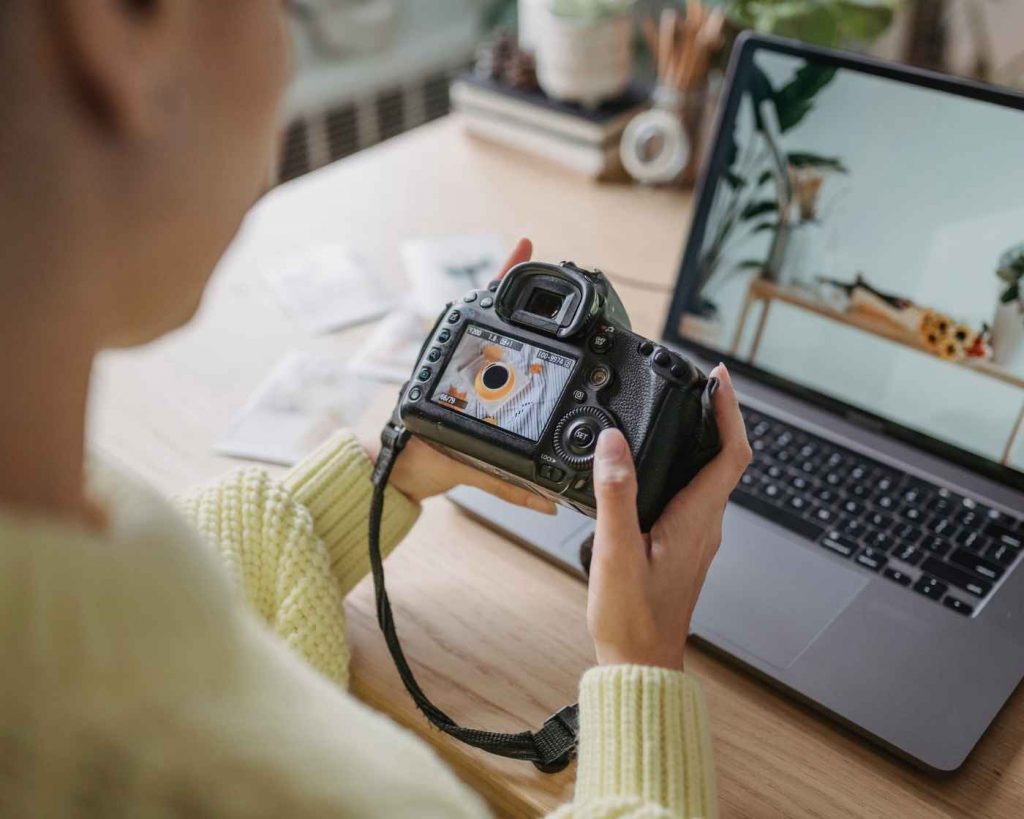
Conclusion
In this article, we’ve explored essential tips and techniques for capturing the breathtaking beauty of Australian landscapes while embarking on a rewarding road trip adventure. From ensuring reliable internet connectivity to creating stunning printed memories and effectively pitching your work to local galleries, these insights empower you to make the most of your photography journey. Embracing the freedom of a motorhome or caravan allows you to seize opportunities for spontaneous and timely photography, enhancing your portfolio with unique perspectives. Remember, the art of photography is not just about the final images; it’s about enjoying the journey, cherishing the experiences, and crafting lasting memories along the way. With thoughtful planning and creativity, you can transform each moment into a powerful visual story that reflects your unique vision and love for the Australian landscape.
Key Takeaways
- Start Planning: Take the first step toward your photography adventure by mapping out your next road trip route and the picturesque locations you wish to visit.
- Share Your Journey: We encourage you to share your trip photos and experiences; your stories may inspire others!
- Explore More Resources: Check out related articles for additional tips on travel and photography to enhance your skills and creativity on the road.
- Enhance Your Skills: Consider enrolling in photography workshops or exploring recommended products that could help elevate your photographic expertise.
Get on the Road: Embrace your caravan or motorhome’s unique advantages for spontaneous photography opportunities, and start crafting your visual story today!

